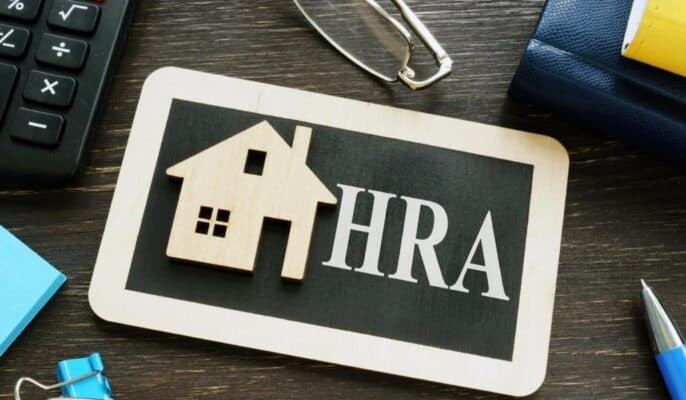House Rent Allowance (HRA) is one of the most commonly received allowances by the salaried class. If you are paying rent for accommodation to a landlord which can mean your parents also, then you are eligible to claim tax exemption for the rent paid.
This tax-exemption can be claimed at the time of filing your tax return as well if not claimed via your employer. If you have provided proof to your employer such as rent receipts, rent agreement etc. then the amount of tax-exemption that you are eligible for will be reflected in the Form -16 i.e. a TDS certificate received form your employer.
How to claim tax exemption on HRA?
1. If rent agreement or rent receipts submitted to employer
If you have submitted rental agreement or rent receipts to your employer, then in such a case, the tax-exempt portion of HRA received by you can be seen in Form-16. It is possible that either the entire HRA received by you during the FY 2019-20 is exempt from tax or only part of it is exempted, depending on which of the conditions/criteria set down for claiming HRA exemption you meet.
Remember while submitting rent agreement or rent receipts to your employer, you are also required to submit PAN of your landlord if the annual rent exceeds Rs 1 lakh.
The taxable portion of HRA will be added to your salary as per provisions in section 17(1) under the head ‘Gross Salary’. On the other hand, the tax-exempt portion of HRA will be shown separately under the head Allowances to the extent exempt under section 10. Remember while filing the ITR-1, you will be required to mention the tax-exempt portion of HRA (partial or full depending on the calculations) under the head – Allowances to the extent exempt u/s 10.
If you are filing your tax return using ITR-1 on the e-filing website, then amount of HRA exempted from tax, if any, is likely to be pre-filled. It is advisable that individuals verify the pre-filled information with the available documents i.e. as mentioned in Part-B of Form-16.
In case these details are not pre-filled or you wish to file your ITR using the Excel utility, then in such a case, these details are to be reported as follows:
a) Taxable portion of HRA
As said above, the taxable portion of HRA is already added under the head, ‘Salary as per provisions in section 17(1)’. You are just required to copy the amount from the Part-B of your Form-16 and paste in the relevant section of ITR-1 form.
The required information will be pasted in the ‘Salary as per section 17’ in ITR-1 form.
b) Tax-exempt portion of HRA
The tax-exempt portion of HRA will be reported under the head, ‘Allowances exempt u/s 10′ in the ITR 1. From the drop down menu, select ’10(13A) – Allowance to meet expenditure incurred on house rent’.
You are required to copy the tax-exempt portion of HRA from Part-B of Form-16 from the ‘Allowances exempt under section 10’ and paste it in the relevant box in the ITR.
2. If rent agreement or rental receipts are not submitted to your employer
In case you have forgotten to submit rent agreement or rent receipts to your employer, then in such a case, you are required to manually calculate the tax-exempt portion of the HRA received by you. This is because your employer has assumed that the entire HRA paid to you is taxable.
How much HRA exemption can be claimed?
The amount of HRA exemption which a salaried employee can claim depends on a few factors. The income tax department has stipulated rules which must be followed while calculating the taxpayer’s HRA exemption. The exemption which a taxpayer is eligible to receive is the least of the following three amounts:
- The actual amount of House Rent Allowance which the taxpayer receives;
- Fifty percent of the taxpayer’s basic salary plus dearness allowance (if the taxpayer resides in a metropolitan city) or forty percent of the taxpayer’s basic salary plus dearness allowance (if the taxpayers reside in a non-metropolitan area); or
- The actual rent paid by the taxpayer minus ten percent of the total of the basic salary and dearness allowance of the taxpayer.

